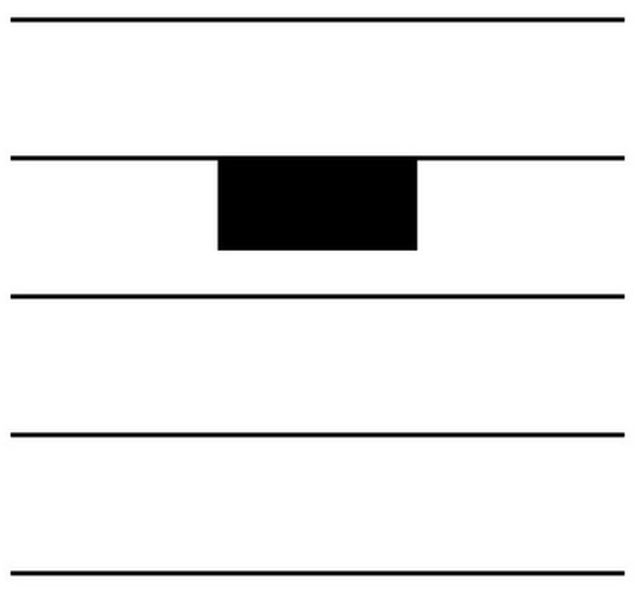
For the exhibition Lacuna, Maaike Schoorel (NL 1973) has invited the artists Germaine Kruip (NL 1970), Lisa Oppenheim (US 1975) and Ferdi (Arnhem 1927 – Baarlo 1969). Schoorel curated the show especially for the Amsterdam Art Weekend. She selected artists she feels close to and made a connection between them in terms of space, time and mentality. All four artists place an equal emphasis on what is visible and vital as well as that which remains untouched. They explore alternative possibilities of perceiving by broadening the spectrum of the senses beyond just ‘looking’.
A Lacuna is an interval during which continuity is suspended.
The work of Maaike Schoorel challenges the viewer’s ability to interpret what they see. By looking carefully and spending time with her canvas’ the apparently monochrome surfaces reveal themselves to be being made up of layers of colored paint that describes faint landscapes, figures and still lifes. Sometimes based on snap shots, selfies or art historical references. The background can be white, grey, pastel. The viewer is challenged in patience. The longer you look, the more you start to see. The painting at the back wall of the gallery ’Selfie in private’ 2018/2019, shows a portrait of the artist naked on her bed. The pose looks like a reversed Olympia,
the use of a mirror makes it self-conscious and contemporary.
The sculptures of Ferdi (Ferdina Jansen Tajiri) were inspired by a road trip the artist made with her family -, the artist Shinkichi Tajiri, and their two daughters - in 1965 through Mexico. She was fascinated by the exotic vegetation around her and transformed her impressions into what became known as the Horti-sculptures. They are bright, colourful, often made of fake fur material and are full of erotic connotations like ‘Clementine’s
Dream’ shown at the center of the gallery. The work of Ferdi fits into the tradition of Yayoi Kusama, Eva Hesse and other female artists of the 60ties and 70ties. In 1968, a time when the art world was very male dominant, she had a solo exhibition at the Stedelijk Museum in Amsterdam. Ferdi sadly passed away a year later, at the creative peak of her career.
Lisa Oppenheim based the series Wildflowers of Palestine, on the photographic archive of the American Colony in Jerusalem, now housed in the United States Library of Congress. In these works, she explores stereoscopy in particular, a technique popular in the late nineteenth and early twentieth centuries for its pseudo-three-dimensional effect. Two photographs of the same subject are taken from slightly different angles and then are optically merged through a viewing device, creating the optical illusion of depth. For this series Oppenheim exposed both halves of a single stereoscopic negative on a single piece of paper. By varying the degree of offset between the two negatives, she creates a new double-image not visible in either of the original stereographic views. The close-up views of isolated flower would not have had much to gain from the
illusion of depth, and it is unlikely that the series was ultimately intended to be viewed stereoscopically. The American Colony still exists today as an international hotel frequented by journalists, diplomats, and UN officials due to its status as a historically neutral zone amid the turbulent politics of the region. It has, at various points, been part of Syria, Jordan, and since June 1967, Israel, all while occupying the
same East Jerusalem land.
In 2011, Germaine Kruip first visited Aranmula to study the production process of the Kannadi. The production of the Aranmula mirror, called Kannadi, was started in the 18th century. The Aranmula Kannadi is a unique object as it is made of metal, not glass. Its creation is a closely guarded secret, only known to a few families. Kruip discovered that, over the last decades, the mirror had always taken on the form of a circle. Throughout spiritual and ritualistic history, the circle has often symbolized a form in order to reach a higher state of consciousness. In order to question and appropriate its shape, she asked the craftsmen to produce a mirror that was squareshaped instead of a circular one. By asking this simple question, the logic, work-ethic and spiritual relationship to the object drastically changed for the workers. Kruip’s formal intervention into the procedural customs of the craft is her commissioning of different geometrical shapes, evoking the process of abstraction inherent to ritualized creative practices. For her two recent works presented here, Square Kannadi with
its Clay Moulds I and Circle Kannadi with its Clay Moulds I, Kruip took the decision to present the metal mirror in between the black clay moulds used in the craftsmen's alchemy process. In addition to creating a total contrast with the almost-perfect polished surface of the mirrors, the matte black chalk highlights furthermore the human intervention and the unique physicality of each piece.
Nature, the process of making, history, craft, softness – Lacuna is a show which reveals a world behind every image. The works all together make a sensual experience, where they flirt with each other and challenge the viewers perception even more.